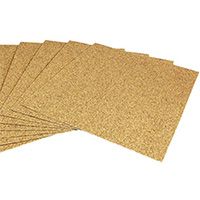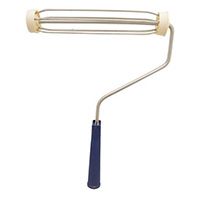We may be compensated if you purchase through links on our website. Our team is committed to delivering honest, objective, and independent reviews on home products and services.
Project details
Skill
Cost
Estimated Time
Breathing new life into old furniture can be a rewarding DIY project. With a little effort and the right techniques, you can transform a worn-out wooden table into a fresh centerpiece for your home. This Old House painter Mauro Henrique, working alongside host Kevin O’Connor, demonstrates how to refinish a wood table with paint.
Tools and Materials To Refinish a Wood Table
For this project, you’ll need a water-based primer and a water-based interior paint. To prime the table, Henrique used Zinsser BullsEye 1-2-3 Interior/Exterior Water-Based Primer, which is manufactured by Rust-Oleum. For the paint, Henrique used PPG Timeless Acrylic Interior Paint in Naval Blue with a semi-gloss finish.
You will also need a tack cloth, a paint roller tray, and the following tools:
Preparing the Table for Refinishing
For a smooth, long-lasting finish, take a few steps to prep your table for paint:
- Remove hardware: Use a flathead screwdriver or a similar tool to carefully unscrew and remove drawer pulls, knobs, and other hardware. This will protect the hardware from paint and allow you to access all surfaces easily during the refinishing process. Store the hardware in a safe place so it doesn’t get lost.
- Sand the wood: Lightly sand the entire table using 220-grit sandpaper to help the new paint stick. Sand in the direction of the wood grain to avoid creating scratches that run against the grain, which may become visible after painting. If the table has intricate carvings or corners, use a sanding sponge or a piece of sandpaper wrapped around a small block to reach these areas.
- Vacuum off the debris: Use a HEPA vacuum to suck up the majority of the sanding dust. Go over all surfaces of the table, including crevices and corners, until no visible dust remains.
- Wipe off fine particles: For a thorough cleaning, follow up with a tack cloth—a sticky cloth designed to pick up and hold fine dust particles. Wipe the cloth over the entire surface of the table to pick up any remaining particles.
Priming a Wood Table
Priming can make the difference between a paint job that lasts for years and one that starts to chip and peel. Here’s what you need to know to prime your wooden table before painting.
Choosing the Right Primer
For this project, Henrique used a water-based primer suitable for both interior and exterior use. This versatile option works well on various surfaces and provides excellent coverage. A water-based primer is generally easier to work with and cleans up with soap and water, making it a good choice for DIY projects. Water-based primers dry faster than oil-based ones, allowing you to move on to painting sooner.
When selecting a primer, consider factors such as the type of wood and the color of the paint you plan to use. If your table is made from a wood that tends to bleed through paint, such as cedar or redwood, you may need a stain-blocking primer. If you plan to use a dark paint color, a primer with a grey tint—like the one Henrique used—can help you achieve better coverage with fewer coats of paint.
Application Technique
To achieve a smooth finish, Henrique recommends using a 4.5-inch mini roller with a 3/8-inch nap. This tool allows for quick and even application. Start by pouring the primer into a paint tray, then load the roller by rolling it back and forth in the tray until it’s evenly coated with primer.
Apply the primer to the table in thin, even coats, covering all surfaces. Roll in the same direction as the wood grain to minimize the appearance of roller marks. Use a brush to reach areas the roller can’t, such as corners or detailed carvings.
Drying Time
Allow the primer to dry for approximately two hours before moving on to the painting stage. This ensures a solid base for the topcoat and prevents any unwanted mixing of the primer and paint. Drying times can vary depending on factors such as temperature and humidity, so check that the primer is completely dry to the touch before proceeding. If the primer feels tacky or soft, give it more time to dry.
Painting the Wood Table
With the primer dry, it’s time to apply the paint and bring your vision to life. A well-chosen paint color and finish can transform the table into a standout piece in your home.
Selecting the Paint
Choose a high-quality acrylic interior paint for your project. In the video, Henrique uses a color called Naval Blue in a semi-gloss finish, which adds a touch of elegance to the piece. Acrylic paints are water-based and offer excellent durability, easy cleanup, and a wide range of colors. A semi-gloss finish is ideal for furniture, striking a balance between matte and shiny that hides many imperfections while still being easy to clean.
When selecting your paint color, consider the room where the table will be placed and the surrounding decor. Bold colors can make the table a focal point, while neutral tones help it blend seamlessly with existing furnishings. Test the paint on a small, inconspicuous area of the table to make sure you’re happy with the color and finish before committing to painting the entire piece.
Applying the Paint
Use the same mini roller technique to apply the paint evenly. If you want a subtle antique look like the one Henrique demonstrated, immediately follow the roller with a dry brush, lightly dragging it across the wet paint. Work in small sections to prevent the paint from drying before you can complete the next step.
This back-brushing technique creates a subtle brush stroke effect that adds character to the piece. Be gentle to avoid removing too much paint or creating an uneven finish. The goal is to achieve a distressed look without making the table appear unfinished.
Use a quality paintbrush for areas the roller can’t reach, such as corners and intricate details. Apply the paint in the direction of the wood grain to maintain a consistent appearance. Be careful not to apply too much paint to the brush, as this can lead to drips and uneven coverage.
Applying a Second Coat
For best results, we recommend applying at least two coats of paint. This ensures even coverage and a durable finish that will stand the test of time. Let the first coat dry before applying the second coat. This usually takes about four hours, but the time can vary based on the paint and environmental conditions.
If you’re aiming for a deeper or richer color, opt for a third coat. Applying multiple thin, even coats will prevent drips and achieve a smoother finish than a single thick coat. Lightly sand with fine-grit sandpaper between coats if the previous coat feels rough or has imperfections.
Finishing Touches
Once the final coat of paint has dried, it’s time to put the finishing touches on your newly refinished table. Carefully reattach any hardware you removed at the beginning of the project. Align screws properly to avoid damaging the newly painted surface. If you want a fresh look, consider replacing the old hardware with new pieces that complement your paint color and style.
Though the paint may feel dry to the touch after a few hours, allow adequate curing time before using the table. This can take up to a week, depending on the paint used and environmental conditions. Avoid placing heavy objects on the table or subjecting it to rough use during this period when the paint is still soft.
Tips for a Professional Finish On a Wood Table
To achieve the best results when refinishing your wood table with paint, keep these professional tips in mind:
- Work in a well-ventilated area to ensure proper drying and minimize fumes.
- Use high-quality brushes and rollers to avoid leaving behind bristles or lint in the paint.
- Apply thin, even coats rather than one thick coat to prevent drips and ensure a smooth finish.
- Consider using a paint conditioner to help eliminate brush marks and create a smoother surface.
- Allow enough drying time between coats and before using the table to ensure the paint fully cures.
- Test paint and primer compatibility on a small section before committing to the entire piece.
Refinishing a wood table with paint is an excellent way to update old furniture and add a personal touch to your home decor. Whether you’re aiming for a sleek modern look or a charming antique finish, this DIY project offers endless possibilities for creativity.



